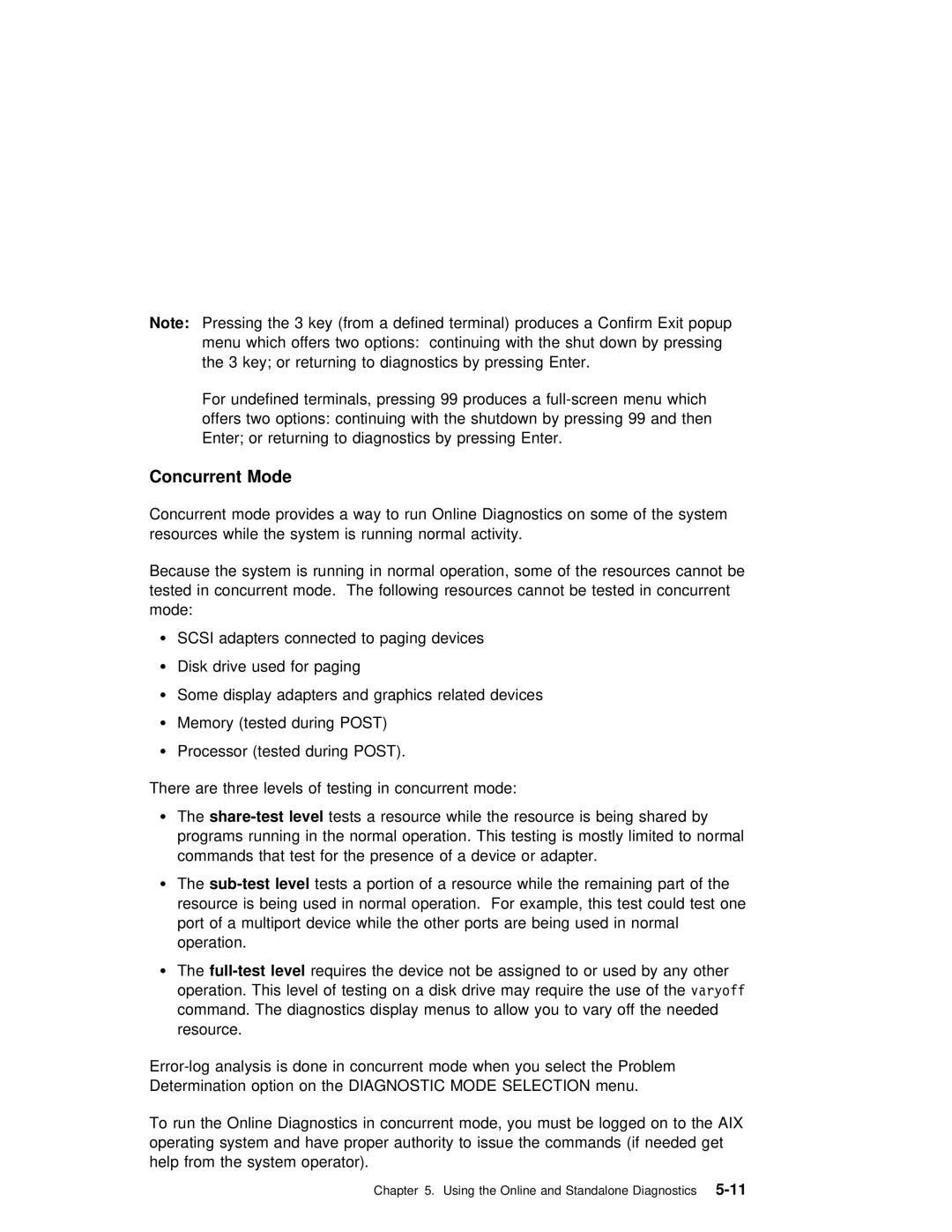Note: Pressing | the | 3 | key | (from | a | defined | terminal) | produces | a | Confirm | Exit popup | |||||
menu | which | offers | two | options: continuing | with | the shut | down | by | pressing | |||||||
the | 3 | key; | or | returning | to | diagnostics | by | pressing Enter. |
|
| ||||||
For undefined terminals, pressing 99 produces a | ||||||||||||||||
offers two options: continuing with the shutdown | by pressing 99 and then | |||||||||||||||
Enter; | or | returning | to | diagnostics by | pressing | Enter. |
|
|
| |||||||
Concurrent Mode
Concurrent mode provides a way to run Online Diagnostics on some of the system resources while the system is running normal activity.
Because the system is running in normal operation, some of the resources cannot b tested in concurrent mode. The following resources cannot be tested in concurrent mode:
Ÿ SCSI adapters connected to paging devices
Ÿ Disk drive used for paging
Ÿ Some display adapters and graphics related devices
Ÿ Memory (tested during POST)
ŸProcessor (tested during POST).
There are three levels of testing in concurrent mode:
ŸThe
commands that test for the presence of a device or adapter.
ŸThe
resource is being used in | normal operation. For example, this | test | could test |
port of a multiport device | while the other ports are being | used | in normal |
operation. |
|
|
|
ŸThe
To run the Online Diagnostics in concurrent mode, you must operating system and have proper authority to issue the help from the system operator).
be logged on to the AI commands (if needed ge
Chapter 5. Using the Online and Standalone
